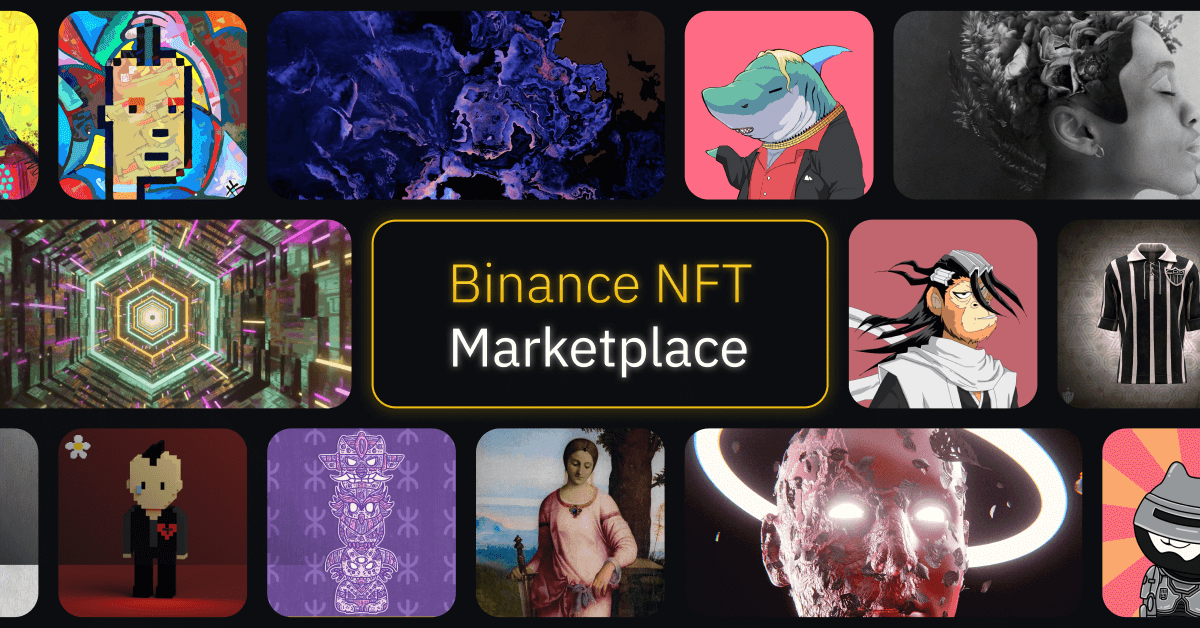What are NFTs?
NFTs are non-fungible tokens. As the name suggests, they are non-fungible. This means that the tokens cannot be reproduced and are therefore unique. For example, Bitcoins are fungible. They are not unique, but each bitcoin can be reproduced. This is not the case with NFTs.
NFT
Due to their uniqueness, NFTs are particularly popular on the digital art market. Many NFTs present digital works of art, some of which achieve extremely high prices. But NFTs are also becoming increasingly important as assets in games in the gaming sector. Large NFT collections such as the Bored Ape Yacht Club are offered on many NFT exchanges.
What is Binance?
Binance is the world's largest crypto exchange. The trading platform was only founded in 2017 and quickly became one of the largest platforms for trading cryptocurrencies. Today, Binance has by far the highest trading volume of any crypto exchange.
Binance mainly benefited from the hype surrounding Bitcoin and other cryptocurrencies at the end of 2017. The platform offers over 100 cryptocurrencies, staking and, for some time now, NFTs. But how can you buy NFTs on Binance?
What does Binance offer for NFT marketplaces?
Binance primarily offers the centralized Binance NFT Marketplace. Centralized marketplaces differ from decentralized marketplaces in that centralized marketplaces for NFTs like the Binance NFT Marketplace are subject to more regulation. However, these also offer greater security.
There are also decentralized marketplaces featured by Binance. These marketplaces are more open and less regulated. However, the risk of buying NFTs on these marketplaces is higher than on centralized marketplaces.
How do I buy NFTs on the Binance NFT Marketplace?
On the Binance NFT Marketplace, you can either buy an NFT at a fixed price, submit an offer to the seller, or participate in an NFT auction .
Selling NFTs follows a simple fee structure. The creator of the NFT receives 1% of the sales price for each sale. This also applies to the person who posts external NFTs on the marketplace.
To purchase an NFT on Binance, you must first create an account on Binance. Go to our instructions for this .
How do I get to the Binance NFT Marketplace?
Login to Binance here! Go to the Binance dashboard . There you will find the NFT option at the top of the header .
From there you can go to the Marketplace .
Here you click on an NFT collection and then select an NFT .
Once you have selected your NFT, you can choose whether you want to buy the NFT directly or make an offer .
To pay at Binance you use the Binance USD Coin . If you don't have enough BUSD, you can purchase it with one click.
Confirm the amount you wish to bid or confirm the direct purchase of the NFT.
You have now purchased an NFT or have submitted an offer for the respective NFT on Binance.
My Top PicksHoneygain - Passive earner that pays in BTC or PayPalMandalaExchange -The Best no KYC crypto Exchange!
BetFury - Play And Earn BFG for daily Bitcoin and ETH dividends!
Pipeflare - Faucet that pays in ZCash and Matic, Games pay in DAIWomplay - Mobile dApp gaming platform that rewards in EOS and BitcoinCointiply - The #1 Crypto Earning SiteLiteCoinPay -The #1 FaucetPay earner for LitecoinLBRY/Odysee - YouTube Alternative that lets you earn Money by viewing videos!FaucetPay - The #1 Microwallet PlatformFREEBTC - The #1 FaucetPay earner for Satoshi'sFaucetCrypto - An earning/faucet site that pays out instantlyFireFaucet - An earning site that pays better for some than Cointiply
DogeFaucet - Dogecoin Faucet
xFaucet - BTC, ETH, LTC, Doge, Dash, Tron, DGB, BCH, BNB, ZEC, FEY - Claim every 5 minutes
Konstantinova - BTC, ETH, LTC, Doge, Dash, Tron, DGB, BNB, ZEC, USDT, FEY, 25 Claims Daily


Comments
Post a Comment